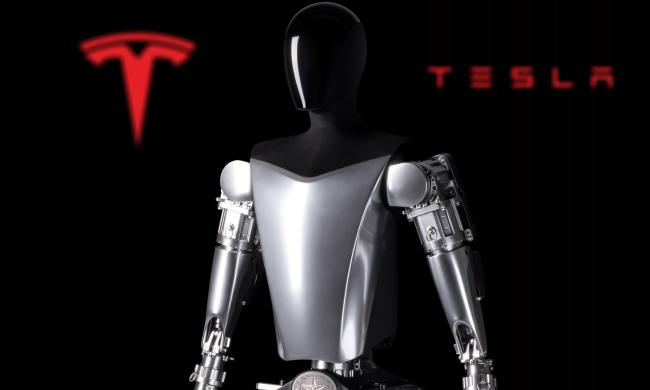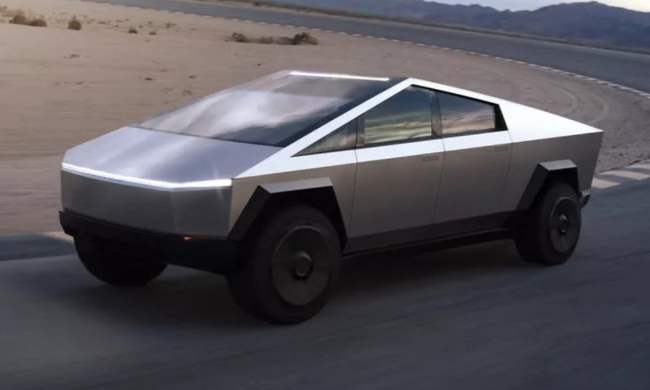Tesla’s revamped Model Y is rolling out in the U.S., Canada, and Mexico in March, the automaker announced on Thursday.
Among a flurry of social media posts, Tesla included a short video showcasing the freshly designed Model Y, which starts at $59,990 in the U.S.
Y pic.twitter.com/Dnr4IxVujb
— Tesla (@Tesla) January 24, 2025
Please enable Javascript to view this content
The first major update for the Model Y since its launch in 2020 brings a new Cybertruck-inspired full-width LED light bar at the front and rear, and a more aerodynamic bumper. The electric vehicle is about 4cm longer than its predecessor, while its width and height remain the same.
The new Model Y is initially being offered in two variants — Long Range AWD and Standard Range RWD. The former can reach 62 mph in 4.3 seconds and has a range of up to 447 miles, while the latter hits 62 mph in 5.9 seconds and has a range of up to 368 miles. The new Model Y’s range has been improved thanks to enhanced aerodynamics and the use of tires with lower rolling resistance.
Meet the new Model Y
Maximum efficiency. Smoother rides. All-new interior.
New on the outside:
– Redesigned exterior with improved aerodynamics to unlock better range, performance & longevity
– Updated wheels, tires & brakes + retuned suspension for a smoother ride
Our… pic.twitter.com/Fk40KzvP8m
— Tesla (@Tesla) January 24, 2025
Addressing earlier criticisms, Tesla has added a new suspension, hubs, and tires to deliver a more compliant and refined driving experience. The Model Y’s interior, meanwhile, gets ambient lighting, refined materials and ventilated first-row seats, power-folding second-row seats, a Bluetooth-compatible eight-inch touchscreen in the back, and hidden speakers for a minimalist aesthetic, Tesla said.
It also comes with improved connectivity offering more range for Phone Key, as well as clearer calls and faster cellular and WiFi connectivity.
Tesla hopes that the updated Model Y will reinvigorate the automaker’s market position, with the new car’s improved efficiency, range, and a fresh design setting it apart from its predecessor. The Elon Musk-led company is under pressure after a 2.3% increase in global sales in the fourth quarter of 2024 failed to overcome a lackluster first half of the year, with last year’s sales coming in lower than those of 2023.
Tesla’s Model Y announcement comes a couple of weeks after it confirmed March availability of the revamped vehicle for China and other Asian markets.
Costco partners with Electric Era to bring back EV charging in the U.S.

Costco, known for its discount gas stations, has left EV drivers in need of juicing up out in the cold for the past 12 years. But that seems about to change now that the big-box retailer is putting its brand name on a DC fast-charging station in Ridgefield, Washington.
After being one of the early pioneers of EV charging in the 1990s, Costco abandoned the offering in 2012 in the U.S.
While opening just one station may seem like a timid move, the speed at which the station was installed -- just seven weeks -- could indicate big plans going forward.
Besides lightening-speed installation, Electric Era, the Seattle-based company making and installing the charging station, promises to offer “hyper-reliable, battery-backed fast charging technology in grid-constrained locations.”
Its stalls can deliver up to 200 kilowatts and come with built-in battery storage, allowing for lower electricity rates and the ability to remain operational even when power grids go down.
If that sounds like it could very well rival Tesla’s SuperCharger network, it’s no coincidence: Quincy Lee, its CEO, is a former SpaceX engineer.
Costco also seems confident enough in the company to have put its brand name on the EV-charging station. Last year, the wholesaler did open a pilot station in Denver, this time partnering with Electrify America, the largest charging network in the U.S. However, Costco did not put its brand name on it.
In an interview with Green Car Reports, Electric Era said it was still in talks with Costco about the opening of new locations. Last year, Costco said it was planning to install fast chargers at 20 locations, without providing further details. It has maintained EV-charging operations in Canada, the UK, Spain, and South Korea.
Meanwhile, the wholesaler’s U.S. EV-charging plans might very well resemble those of rival Walmart, which last year announced it was building its own EV fast-charging network in addition to the arrangements it already had with Electrify America.
Read more
Tesla reveals price range for Optimus Gen2, its ‘robot without wheels’

“The future should look like the future”, CEO Elon Musk said at the Tesla "We Robot" special event held in Burbank, California, earlier this week. Sure enough, Tesla’s much-anticipated autonomous robotaxi, the Cybercab, and its large-van counterpart, the Cybervan, seemed straight out of celebrated sci-fi movies. But as the name of the event hinted at, a vision of the future would not be complete without robots: Several of the Optimus Gen 2, Tesla’s latest version of humanoid-like robot, were found serving drinks, holding conversations with guests, and even dancing at the event.Tesla has recently pitched the Optimus as a potential replacement for factory workers in China and elsewhere. Musk previously said he expects the Optimus to start working at Tesla factories in 2025 and to be available to other firms in 2026.
Yet, at the event, the Tesla boss revealed his expanded vision of a household robot that can do “everything you want: Babysit your kid, walk your dog, mow your lawn, get the groceries, just be your friend, serve drinks”.He also gave a closer estimate of the robot’s price tag: Once produced "at scale," Optimus should cost somewhere between $20,000 and $30,000. Musk had previously said the robot’s price would be about half that of a car.
Staying true to his sci-fi vision, the Tesla CEO referred to Optimus as a cross between R2D2 and C-3PO, the famous droids from the Star Wars film series.
Ever since the first generation of the Optimus was revealed in 2022, Tesla has emphasized the continuity between its cars and the robot. “Everything that we’ve developed for our cars -- the battery power’s electronics, the advanced motor’s gearboxes, the software, the AI inference computer -- it all actually applies to a humanoid robot,” Musk said at the event. “A robot with arms and legs, instead of a robot with wheels.”
Tesla would not be the first to offer a domestic robot on the market. Hyundai-owned Boston Dynamics has already commercialized a home service-type robot called Spot with a hefty price tag of $74,500. BMW and Open AI are backing robots made by Figure, a California-based company. Meanwhile, Nvidia is developing Project GR00T to also deliver humanoid robots.Earlier this year, Goldman Sachs forecast that the annual global market for humanoid robots could reach $38 billion by 2035, with robot shipments of 1.4 million units both for industrial and consumer applications. It also said that robots could become more affordable as their manufacturing cost has been decreasing more than expected -- leading to faster commercialization.
Read more
Tesla Cybertruck: everything we know

The Tesla Cybertruck is Tesla's take on an electric truck, and boy has it had a controversial first few years. The truck was first announced back in 2019 -- complete with broken window... during a demo showing how strong the windows were supposed to be. When the truck finally started rolling out to customers in 2023, it did so very slowly -- and was soon subject of a recall.
We're now almost a year into Cybertrucks on the streets, and if you live in a major U.S. city, it's entirely possible that you've seen one in the flesh. If you have, you know that it's completely unlike anything else on the road right now, and represents Tesla's vision of the future of personal transportation.
Read more




















 English (US) ·
English (US) ·